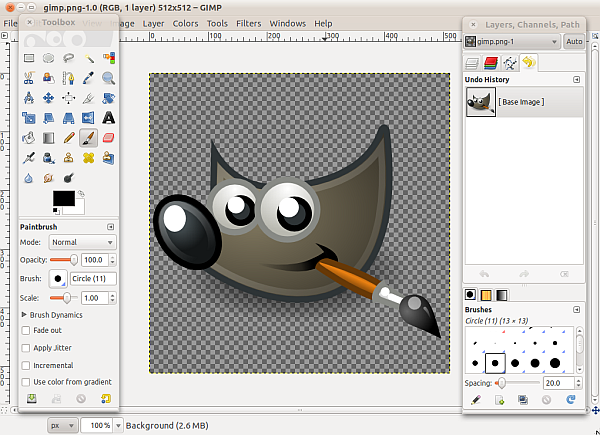
- #Gimp software tutorials how to
- #Gimp software tutorials mac os
- #Gimp software tutorials update
- #Gimp software tutorials free
Another important aspect of note is the new interface. Once you get the interface altered, you can start learning about the tools and options that the GIMP ships with. Figure 2: Dropping Items at dock station Figure 3: Modified user interface It is advisable to change the default interface for a better and faster work experience.

Now just resize the left toolbar to give it a more streamlined look. By default, it is the Paintbrush, so drag it to the empty space in the right toolbar near the other tabs like Layer, Channel, etc.

To do so, just click on the name written in bold black. For example, to make the left toolbox utilise less space, we need to adjust the tool options located at the lower end. To change the interface, simply drag the icon/toolbox name and drop it in the area assigned (Figure 2). Tips: You can always alter the interface for better ergonomics and for a lucid work experience. You can easily customise it to suit your work needs. Layer Option: The toolbar lists all the major functions like setting layers, paths and several other functions.It loads images and provides you with a platform to showcase your creativity. Image Window: This is the section where you can do editing and drawing.Toolbox: This consists of tools and the tools option to perform several operations.The default interface of the GIMP consists of three features: Windows: X:Documents and Settingsusername.gimp-2.6splashesĪnd copy the desired splash image with gimp-splash.png name.Tips: You can change the splash screen by creating a ‘splashes’ directory in the. But this load time becomes much snappier from next time onwards. GIMP starts with a ‘Splash Screen’ the initial loading can be a bit long depending on the system you use and the number of fonts and plug-ins installed. Once you have finished the installation, it’s time to start the application. Thus, it shouldn’t be a problem for you to get your binary package.
#Gimp software tutorials mac os
Since the GIMP is a cross-platform software, it is available for nearly all the operating systems, ranging from Linux and Windows, to Mac OS and BSD.

If your operating system doesn’t ship with it, head to to find a binary installation package for your OS.
#Gimp software tutorials update
If you have an older revision, you can update it using your package manager. Every new Linux distribution comes with the GIMP 2.6 as the default image editing program. The current stable version is 2.6.6 and it ensures that you are not affected by unwanted bugs.
#Gimp software tutorials how to
Once we get these done, we will explore how to make wallpapers and designs with this image editor.įirst, let me introduce you to the GIMP 2.6 interface and what those tools are meant for.īut before we get started, it is necessary to install the application (preferably, the latest version). Now, allow me to guide you through the first leg of this tutorial where you will get introduced to a few basic facts about the interface, several basic editing tools, how to spice up photos, and other tips and tricks. After I became comfortable with the GIMP, it was just a matter of time before I created a wallpaper, edited an image or any other work of art. I am still discovering uncovered facts and reaching newer shores with this tool. One fine day, I installed Linux and started playing with the GIMP, as it was the default image editor. But its complexity always forced me to un-install it.

I even asked them and tried Photoshop many a time. I always wondered how people could be so good at creating wallpapers and editing images. It has always been denounced for an interface that’s too perplexing for newbies. It is very powerful and a great alternative to Photoshop.
#Gimp software tutorials free
The GIMP or the GNU Image Manipulation program is a free and open source raster image editing software.


 0 kommentar(er)
0 kommentar(er)
